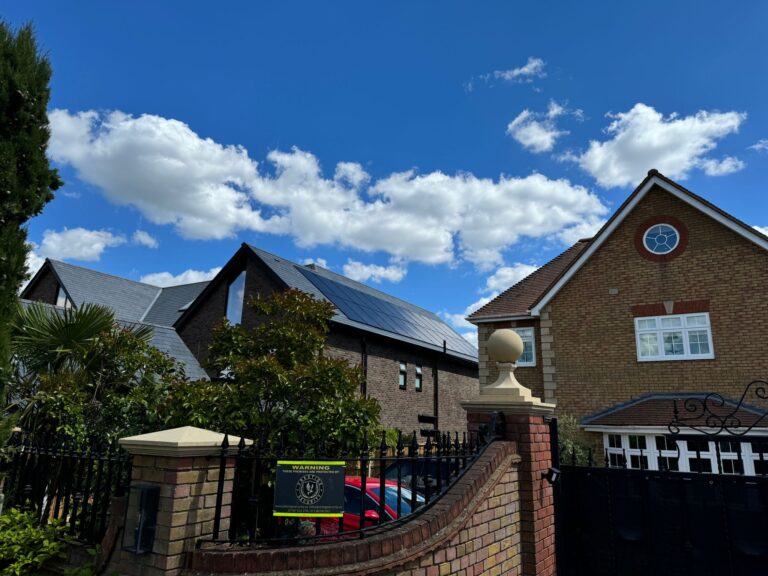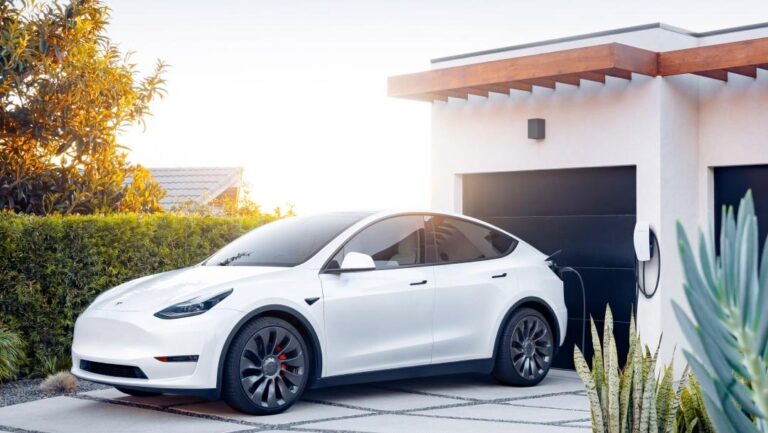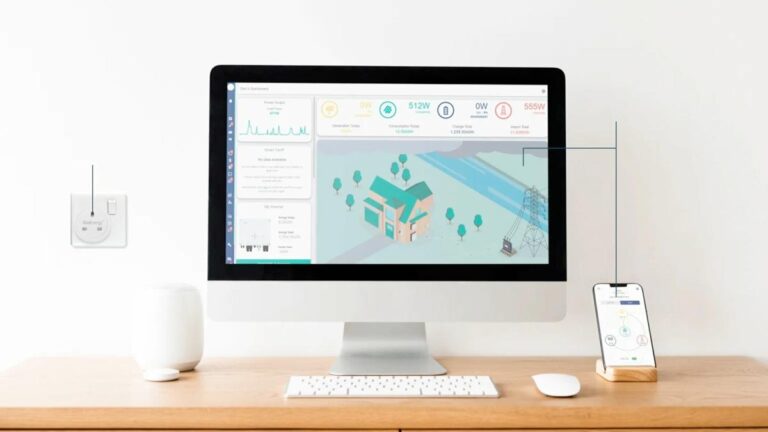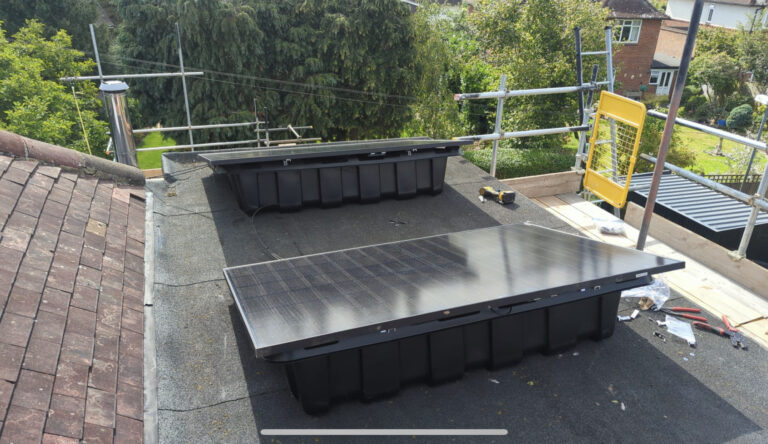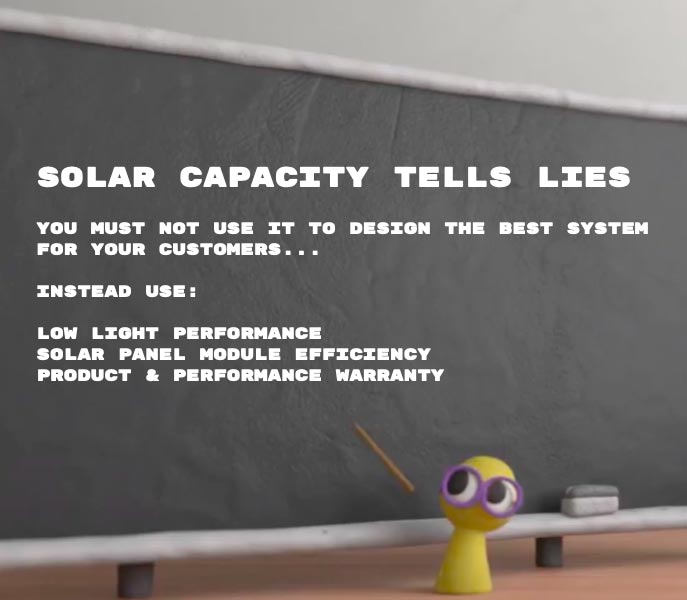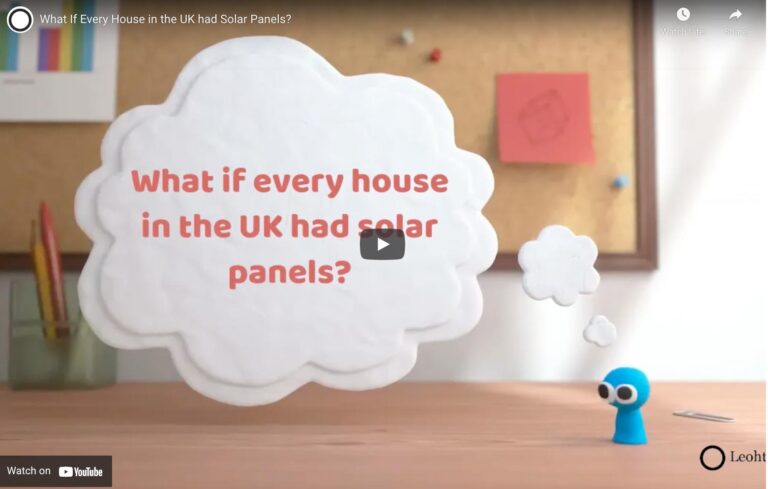The solar panel inverter is the most important part of your solar system – choose a good one.
Solar panel inverters convert DC electricity generated by your solar panels into AC to be used in the home.
They monitor your system, house consumption, some control the batteries and can connect to your energy tariff, automatically topping up at cheap rates.
Types of solar panel inverters
String inverters
A string inverter is a device used in solar energy systems to convert the direct current (DC) electricity generated by a string or group of connected solar panels into usable alternating current (AC) electricity. It consolidates the power from multiple panels wired in series, ensuring compatibility with the electrical grid. String inverters are known for their reliability and cost-effectiveness, making them a common choice for residential and commercial solar installations. However, they operate at the efficiency of the weakest panel in the string, which can limit overall output, especially in cases of shading or variations in panel performance. In such cases, a TIGO optimiser can be used on a single panel or every panel. SolarEdge optimisers can also be used but are required to be placed on every panel.
Hybrid inverters
A hybrid inverter is a multifunctional device used in solar energy systems that not only converts direct current (DC) electricity generated by solar panels into usable alternating current (AC) electricity but also has the capability to manage energy storage systems (solar batteries). This versatility allows hybrid inverters to store excess energy generated during sunny periods for use at night or during power outages. Unlike standard string inverters, hybrid inverters can intelligently switch between various energy sources, optimizing energy usage and enhancing system resilience. A 5 kW hybrid inverter can send 5 kW to the AC side and charge the batteries at 3.6 kW giving a maximum potential generation of 8.6 kW.
Microinverters
These used to be very popular and are fitted to each panel, immediately converting that panels generation to AC. However, with the popularity of battery storage, improvements in Maximum Power Point Trackers (MPPTs) and optimisers – we don’t really recommend anymore. For example, to charge a battery you would have to convert back from AC to DC incurring losses and you can get the same shading/optimisation from using more cost effective optimisers without the losses.
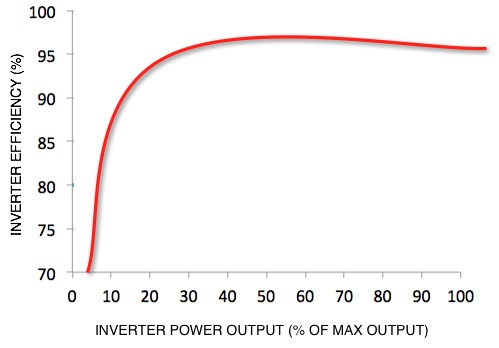
Solar inverter efficiency curve
Inverters are a lot less efficient at lower power

Solar irradiance in the UK
A solar inverter in the UK will on average be generating half as much energy as an inverter in the US or Australia with the same sized solar array.
The standard 1.3x ratio used in the US and Australia doesn’t apply to the UK.
Following this guidance may mean your inverter spends most of its operation performing at lower efficiency (see above).
We recommend a ratio of 2x. E.g a 10 kW solar panel array should have a 5 kW solar inverter.

